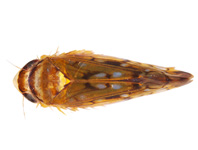Abstract
The identifications of non-permineralized fossil bird bones recovered from Ankilitelo Cave in southwestern Madagascar are presented. Among the more than 560 elements recovered, 29 different taxa were identified, the vast majority being species that still occur in this region of the island. Eggshell remains from the extinct elephant bird (Family Aepyornithidae) and assigned to Aepyornis sp. were found at the site. Two identified extant taxa, Scopus umbretta and Monias benschi, no longer occur in the area immediately surrounding the cave. The available radiocarbon measurements of collagen from fossil bird bones and avian eggshell carbonate of recovered from the cave range from 13,270 Cal yr BP to modern times. Hence, the presumed ecological shifts that took place resulting in the disappearance or range contractions of these three taxa is within the Holocene and are presumed to be associated with natural climatic change and in more recent centuries associated human pressures. Information is also presented on the origin of guinea fowl (Numida) and inference on the period of colonization of Corvus albus on Madagascar.

